Have you ever tried to put on clean clothes only to have them cling to your body? If that happens to you and you find it annoying, you’re not alone.
Besides the apparent embarrassing sight of clothes sticking to the body, the clinging fabrics can irritate the skin.
So why does it happen in the first place?
When fabrics cling to the skin, that’s because the clothes are charged with static.
This often happens in the dryer due to excessive friction and spinning speed. When you put on these clothes, the static makes them cling to the skin and even causes a mild electric shock.
There are usually two ways to deal with static in clinging clothes. Either remove it by releasing the static charge from the fabrics or prevent it in the first place.
Obviously, preventing it is the more convenient course of action. Read more to learn about static and clinging clothes.
What Causes Clothes To Cling to the Body?

Without getting too technical, clothes clinging to the body are a result of static charges in the fabrics.
You can try to pull the clothes off the skin, but they will fall back and stick to it. Eventually, the static will dissipate through the skin if you touch a metal surface, but not before embarrassing you.
Now let’s get technical.
Most often, the clothes will get this static charge in the dryer.
The spinning tub generates negative electrons that penetrate the fabrics and stick to them. Positive charges in the tub attract the negative electrons. If the charges are strong, an electric spark and a zap happen.
But most often than not, the electrical charges are too mild. So instead of zapping and disappearing, they cling to the fabrics as latent charges waiting for release.
The more friction the clothes have inside the tub, the more electrostatic charges are generated.
But these charges need the right conditions to facilitate their generation—namely, low humidity. Moisture on the surface dissipates the charges and prevents them from clinging to the clothes.
This is why static electricity is generated in the dryer and not during the washing phase.
It’s also the reason clinging clothes are worse during the winter than in the humid summer months.
Moreover, not all fabrics are prone to static electricity charges in equal measure.
Natural fabrics such as cotton repel electric charges more successfully than synthetic or blended fabrics.
How to Prevent Clothes From Sticking to the Body
If prevention is better than treatment, then you can save yourself a lot of hassle by stopping static from attaching to the clothes in the dryer in the first place.
But how can you prevent something that you can’t see from latching on to the clothes inside of a tub spinning at 1,200 RPM?
Easy, you just follow these simple steps.
1. Gentle Cycles
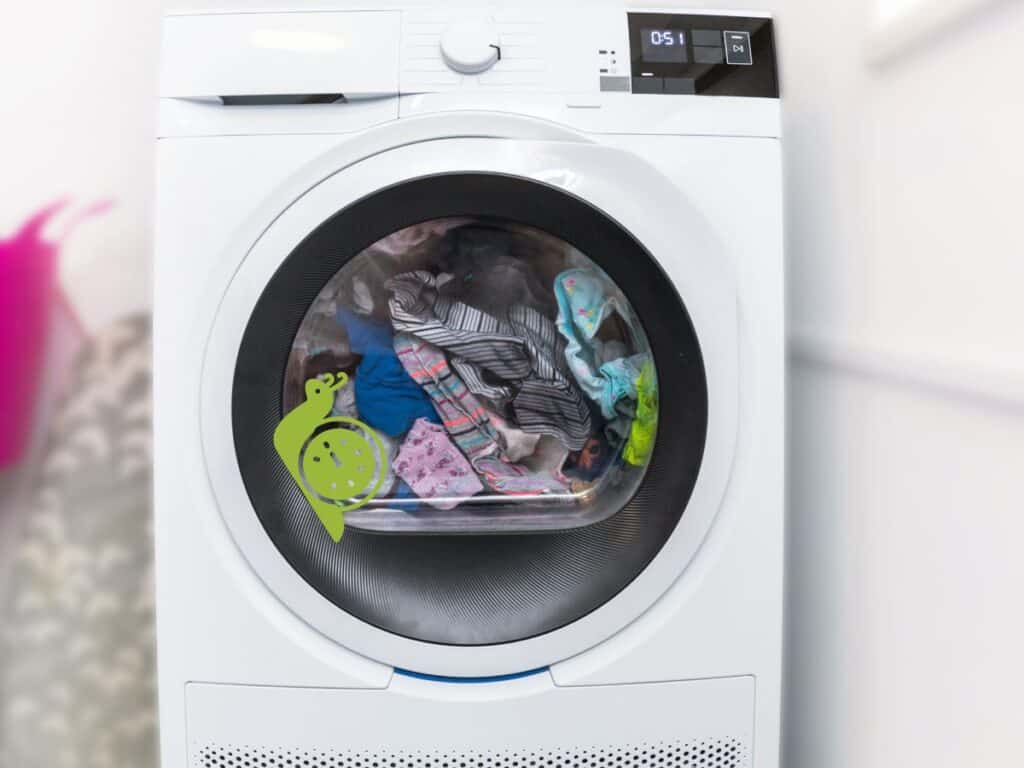
It’s no secret that high spinning speeds cause a lot of electrical charges which bind and stick to the clothes until you wear them.
So, one way to prevent so much static electricity is to use gentle cycles that run at low speeds between 600 to 800 RPM.
Luckily these cycles are more suited to synthetics and delicate fabrics, which attract the most static electricity anyway.
2. Natural Fabrics

I mentioned a few times that the problem of clinging clothes often happens with synthetic materials, and you’re less likely to face this problem with cotton or linen clothes.
So it stands to reason that the more natural fabrics you have, the less likely that your clothes will stick to your body after washing and drying them.
Not to mention that natural fabrics are healthier, softer against the skin, and don’t cause allergic reactions.
3. Hand Wash
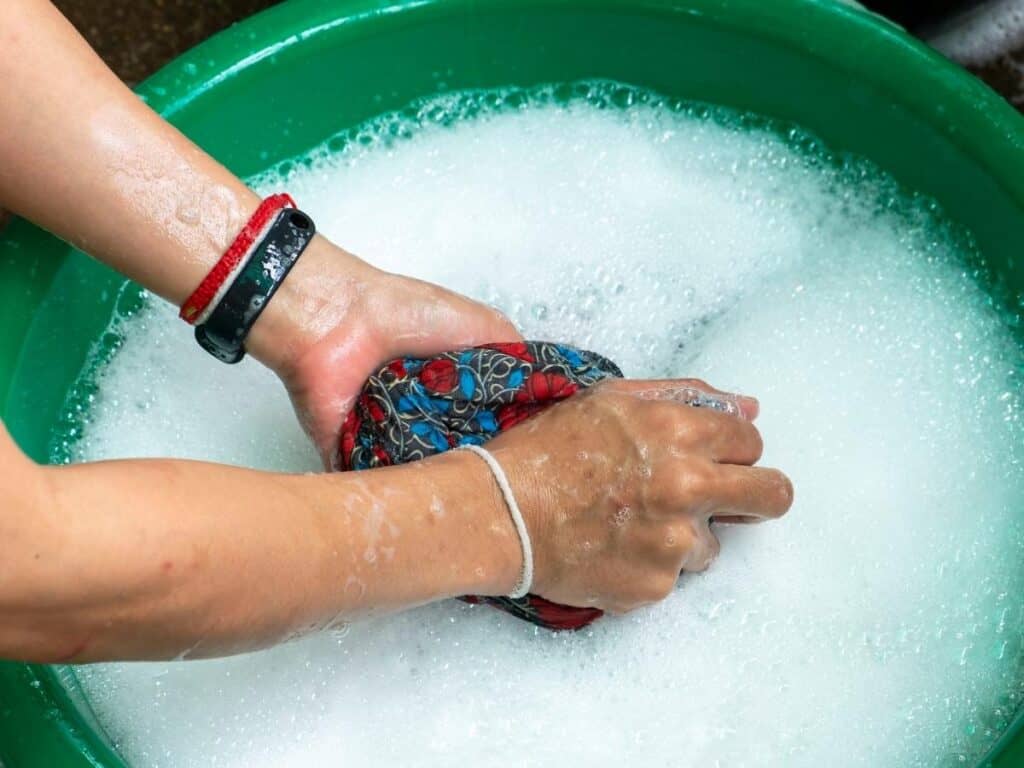
One of the most obvious solutions to prevent static in clothes is to hand-wash the clothes. That way, they won’t get into the tub, spin fast, and get charged with static electricity.
I prefer to use this method as a last resort. And I recommend you only use it with synthetic and delicate fabrics that don’t require much washing or scrubbing.
If you only have a couple of items of clothing that give you trouble, why not wash them by hand and spare yourself the clingy clothes syndrome?
I have also conveniently also made a step-by-step hand washing guide for you here.
4. Avoid the Dryer
If static electricity is generated in the dryer where the tumbling clothes attract the positive and negative particles, then it makes sense to avoid the dryer altogether to prevent static in fabrics.
But how would you dry the clothes then? The old-fashioned way. Hang them near a door or a window and let fresh air dry them gently. It’s a slow process, but then again, you’ll also avoid snags, wear and tear, and numerous wrinkles in the clothes.
If you want to utilize the power of the sun, I’ve also made a guide on line-drying clothes for you here and one on drying clothes outdoors during winter here.
5. Increase Humidity Levels
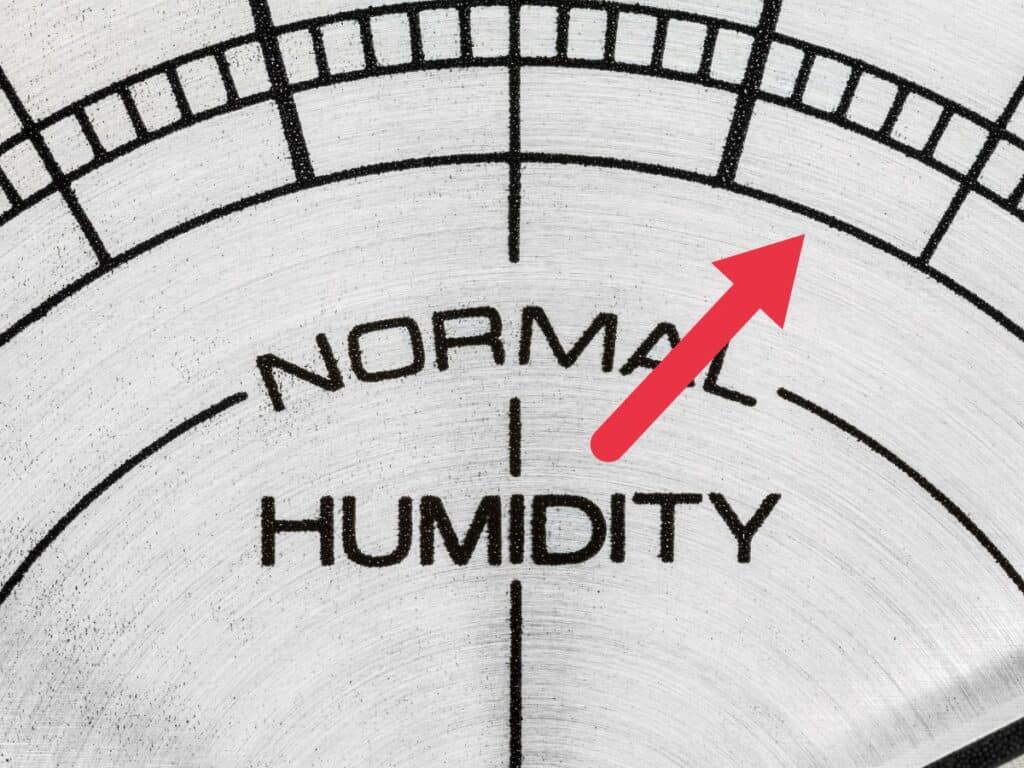
Dry weather is the primary facilitator of static electricity in the dryer. If you use the air conditioner often, chances are even the summer is dry in your house.
One way to prevent static in clothes in the dryer is to increase the humidity in the house. This is especially true if the washer/dryer is inside the house and not out on the balcony.
One way to raise the humidity in the house is with a humidifier. Keep it near the dryer and switch it on for a few hours before you do the laundry. It might also help to switch off the AC while the dryer is on.
If you have a balcony and the winter isn’t especially frigid in your area, you can move the dryer out and solve the problem of low humidity without having to buy a humidifier.
How to Stop Clothes From Sticking to Body
But what if you couldn’t prevent static from charging your clothes in the dryer? What if none of the above solutions worked for you?
Does that mean that you have to suffer the inconvenience and embarrassment, let alone the occasional zap, in silence like a martyr?
Not at all. If static is inevitable, then suffering it is optional.
Here are a few ways to get rid of static in clothes.
1. Walk Barefoot

You might be wondering what walking around barefoot has to do with static in the clothes.
As the physics teacher would have said: everything.
The reason the clothes cling to your skin is that they’re charged with static electricity. This electricity needs an outlet to leave the fabrics and make them less clingy.
When you remove your slippers and touch the floor with your bare feet, you give the static the outlet it needs.
Once the electric charge leaves the clothes through your feet, you will no longer have to worry about sticking clothes until you wash them again. It’s that simple.
2. Use Dryer Sheets
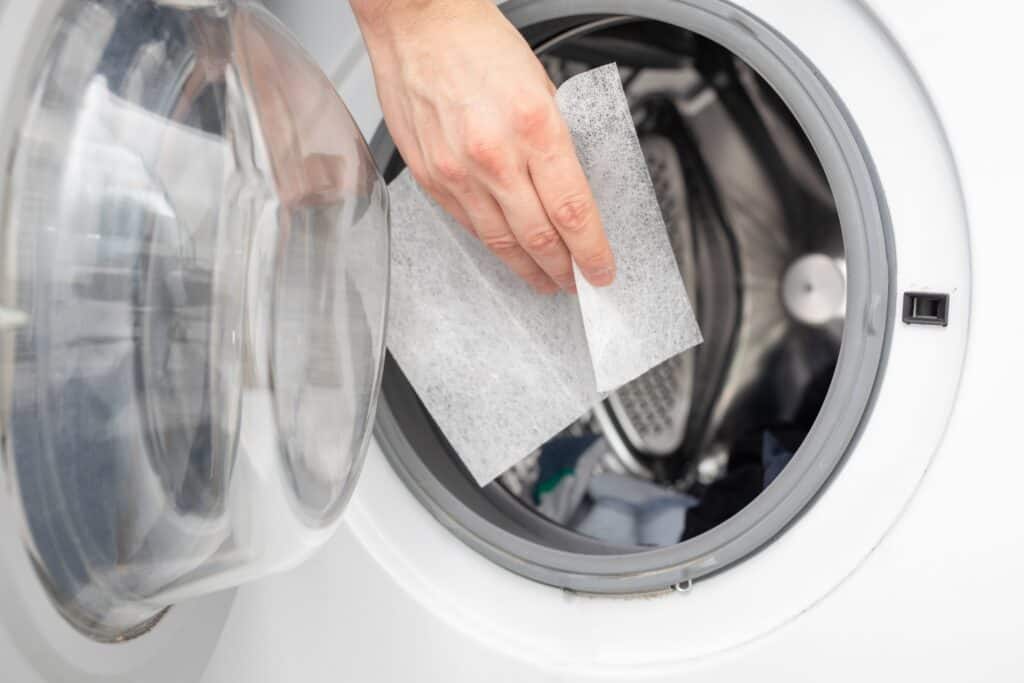
A dryer sheet can come in handy when you have a skirt or a pair of pants with an extra static charge.
- Hold the item of clothing literally at arm’s length and keep it away from your skin.
- Next, rub the underside of the pants or skirt with the dryer sheet.
This will neutralize the static charge in the fabrics and stop them from sticking to your body.
The only drawback to this method is if the static is hard to reach with the dryer sheet.
Did you know that dryer sheets are effective at keeping pests away from your home as well?
3. Water it

This might sound counterintuitive, but it actually works.
When the clothes are sticking to your skin, you can quickly get them unstuck with a spritz of water.
You won’t have to get them thoroughly wet or even moist. Just a light sprinkle will get the static charge to dissipate without much fuss.
Use this method as locally as you can. You wouldn’t want to spritz a whole dress, for example. Just sprinkle the spots that stick to the body.
That will make it easier for the garment to dry within a few minutes.
4. Anti-Static Spray

This works in the same way as spraying the fabrics with water.
Only it’s more effective, and you won’t have to spray the dress or blouse too much to get rid of the static.
A light application of the anti-static spray is all you need to release the trapped static.
Again you should spray the outside surface of the fabric, not the inside. That way, you can wear the dress or skirt without having to wait for it to dry.
Here is a great anti-static spray on Amazon (paid link.)
5. Spray Aerosol Hairspray
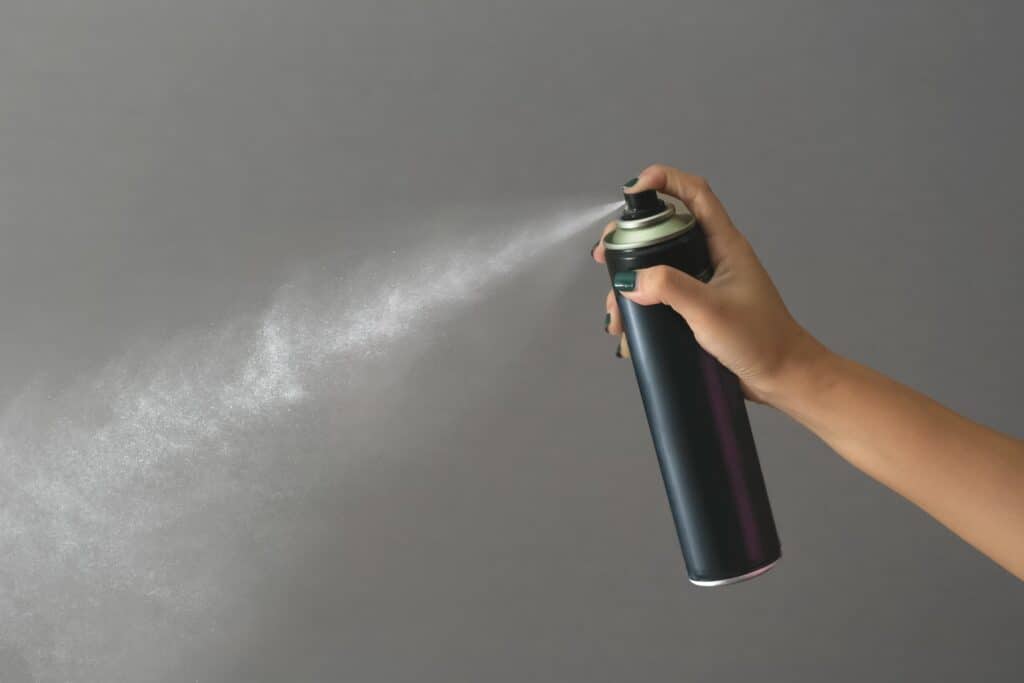
If you can’t get your hands on an anti-static spray and spritzing the dress with water is not ideal, then using an aerosol hairspray will get the job done just as fast.
The idea is to release the static charge through a liquid medium.
In this case, the aerosol hairspray provides an outlet for the trapped static, just like water and an anti-static spray. As long as you dampen the surface of the fabric, the static will be released.
6. Get Grounded

A simpler way to release static from clothes is to touch a metal surface such as a table or a chair.
As long as the metal surface is touching the ground, you’ll get your clothes unstuck quickly and without the need to moisten them.
It’s crucial that the metal is grounded. That is to say that the metal touches the bare floor without interruptions.
A metal table with wooden legs wouldn’t work. Nor would a metal table resting on a carpet.
For the static to leave the clothes, it has to have a metal conduit that takes it all the way to the floor.
This is the same concept as walking barefoot on the floor.
7. Use a Moisturizer

Another way to get the clothes unstuck is to apply moisturizer to your skin where the clothes stick. This will insulate your skin and undo the undesired attraction immediately.
This is a temporary solution, however. Once the moisturizer is absorbed by the skin, there’s a chance that the clothes will become clingy again.
But by that time, the electric charge will be too weak to cause you any inconvenience.
Tips to Stop Static and Clinging Clothes
Sometimes, no matter what you do, your clothes end up charged with so much static that they become unwearable.
The following tips can help you stop static in its tracks.
- Use a Fabric Conditioner: I mentioned that some fabrics are more prone to static charges than others.
When you add a fabric conditioner during the washing cycle, you lubricate the clothes, which reduces the amount of friction and minimizes the charged electrons flying about inside the tub. Softer fabrics are less likely to generate static. - Separate Synthetics in the Dryer: Ironically, synthetics are not the ones that generate static. At least not as much as natural fabrics and heavy clothes tumbling about.
So if you dry the synthetics separately from other fabrics, you’ll have less static in your delicate and blended clothes. - Use Dryer Sheets: Remember how dryer sheets helped you get rid of static in the clothes in the previous section?
If you add those same dryer sheets to the drying cycle, they’ll neutralize the charged particles in the tub and prevent them from sticking to the clothes. - Shake the Laundry: When you remove the clothes from the dryer, give each item a hearty shake or two to discharge the static and prevent it from setting in.
This works best if the humidity is high in the house. - Use a Metal Hanger: Before you put on the dress or blouse, give it the hanger treatment. Run a metal hanger over the front, back, and along the arms of the blouse or dress.
Make sure the metal is actually touching the fabric. This will attract the static in the clothes and make them safe to wear.
Conclusion
Clingy clothes are not just an embarrassment but an inconvenience as well.
This is often caused by static build-up in the dryer due to tumbling clothes and high spin speed.
Spritz the fabric with water or rub it with a dryer sheet to release the static charge.
Next, you can check out my comprehensive guide on keeping specific parts of your body from showing through your clothes.
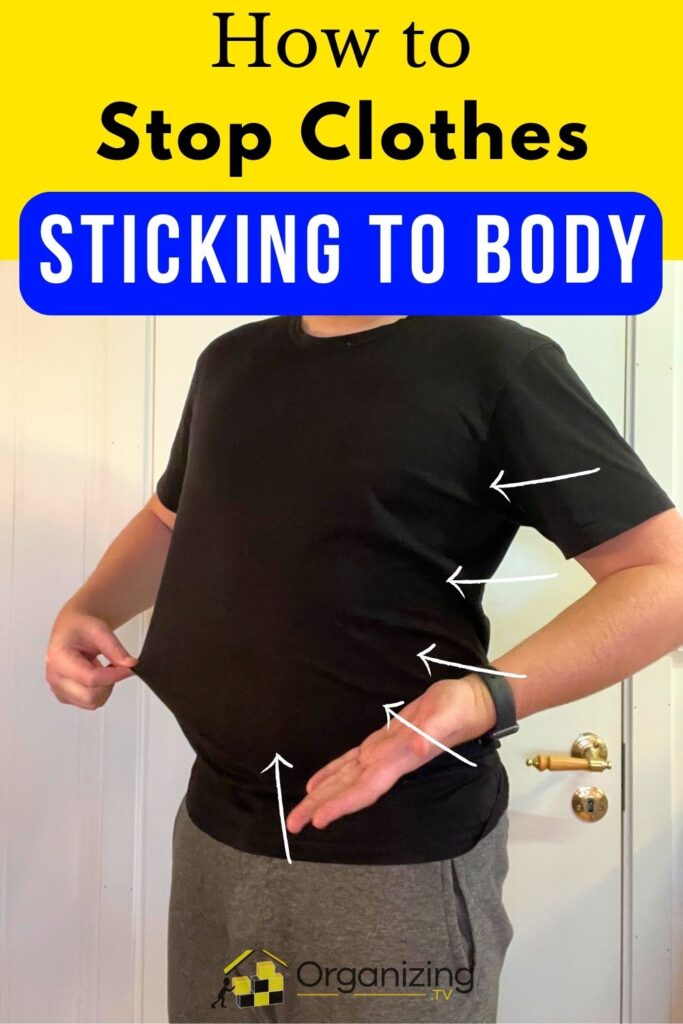

I’m an expert wardrobe organizer and a bit of a clean freak. I created this website and its YouTube channel to share practical guides about laundry and organizing. My teachings have been featured in multiple large news publications, and I’ve self-published two wardrobe organizing books and an entire course on the subject.

